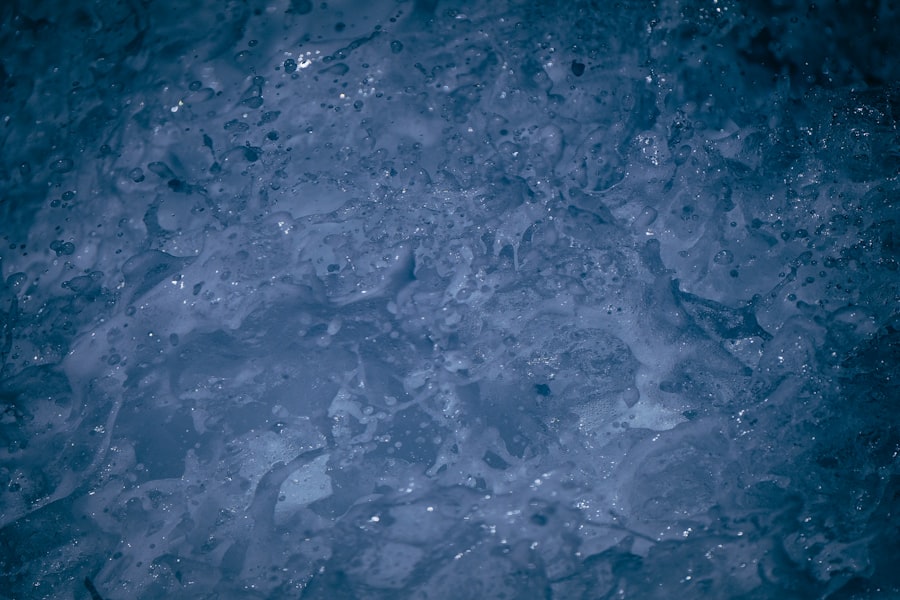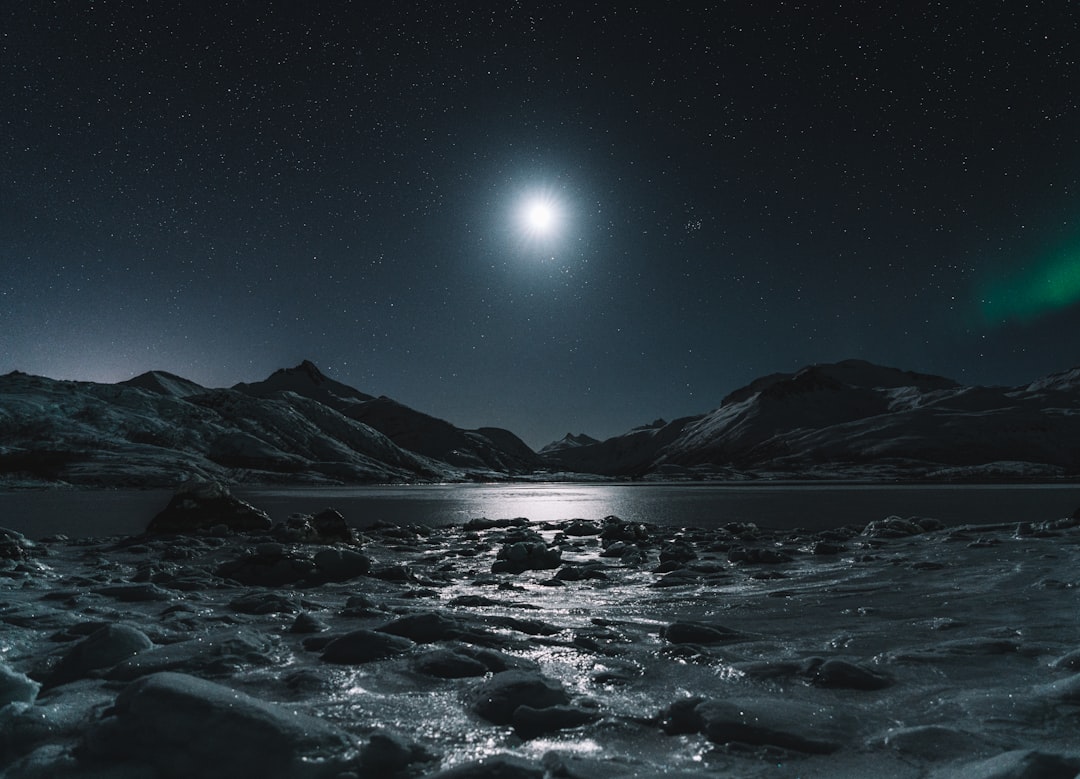NASA’s ambitious mission to control the Moon’s water ice represents a significant leap in humanity’s quest for sustainable space exploration. As the agency sets its sights on the lunar surface, it aims to unlock the potential of water ice, a resource that could revolutionize future missions. The Moon, long regarded as a stepping stone for deeper space exploration, holds vast reserves of water ice, particularly in permanently shadowed craters at its poles.
This mission not only seeks to understand the distribution and composition of this ice but also aims to develop technologies for its extraction and utilization. The importance of this endeavor cannot be overstated. Water is a critical resource for human survival, and its presence on the Moon could enable long-term habitation and exploration.
By harnessing lunar water ice, NASA envisions a future where astronauts can live and work on the Moon for extended periods, paving the way for missions to Mars and beyond. This article delves into the significance of lunar water ice, the challenges of its extraction, and the potential benefits it holds for future space exploration.
Key Takeaways
- NASA’s mission to control moon’s water ice is a crucial step towards sustainable lunar exploration and potential human habitation.
- Water ice on the moon holds significant importance as a valuable resource for sustaining life and fueling space missions.
- NASA’s exploration efforts have confirmed the presence of water ice in the moon’s polar regions, opening up possibilities for utilization.
- Extracting and utilizing water ice on the moon pose technical and logistical challenges that require innovative solutions.
- NASA’s plan to control and harvest moon’s water ice involves advanced technologies and strategic partnerships to ensure successful implementation.
The Significance of Water Ice on the Moon
Water ice on the Moon is not merely a scientific curiosity; it is a vital resource that could transform lunar exploration. The presence of water ice in permanently shadowed regions of the Moon suggests that these areas could serve as reservoirs for future missions. Water is essential for life, and having access to it on the Moon would significantly reduce the need to transport supplies from Earth.
This would lower mission costs and increase the feasibility of sustained human presence on the lunar surface. Moreover, water ice can be converted into hydrogen and oxygen, which are crucial for rocket fuel. This capability could enable spacecraft to refuel on the Moon, allowing for deeper space missions without the need to return to Earth.
The strategic importance of lunar water ice extends beyond immediate survival; it could serve as a launchpad for humanity’s journey to Mars and other celestial bodies. Thus, understanding and controlling this resource is paramount for NASA’s long-term vision of space exploration.
NASA’s Exploration and Discovery of Water Ice on the Moon

NASA’s exploration of lunar water ice has evolved significantly over the years, with various missions contributing to our understanding of this resource. The Lunar Reconnaissance Orbiter (LRO), launched in 2009, has played a pivotal role in mapping the Moon’s surface and identifying potential locations of water ice. Its high-resolution images have revealed shadowed craters that are believed to harbor significant deposits of ice, providing scientists with valuable data for future missions.
In addition to LRO, missions like the Lunar Polar Exploration (LPE) have focused on conducting detailed studies of the Moon’s polar regions. These missions aim to confirm the presence of water ice and analyze its composition and distribution. The findings from these explorations have not only confirmed the existence of water ice but have also sparked interest in further investigations.
As NASA continues to gather data, it lays the groundwork for future missions that will seek to extract and utilize this vital resource.
The Challenges of Extracting and Utilizing Water Ice on the Moon
| Challenges | Solutions |
|---|---|
| Low temperature | Developing equipment that can withstand extreme cold |
| Harsh lunar environment | Designing robust machinery and technology |
| Transportation of extracted water ice | Creating efficient methods for transporting water ice to desired locations |
| Energy requirements | Developing sustainable energy sources for extraction and utilization |
While the prospect of extracting water ice from the Moon is exciting, it is not without its challenges. One of the primary obstacles is the extreme environmental conditions present on the lunar surface. Temperatures can fluctuate dramatically between day and night, creating a harsh environment for any extraction equipment.
Additionally, the regolith, or lunar soil, can be abrasive and difficult to navigate, posing further challenges for machinery designed to extract ice. Another significant challenge lies in the technology required for extraction. Current methods for extracting water from ice on Earth may not be directly applicable to the Moon’s unique conditions.
Developing new technologies that can operate efficiently in low gravity and extreme temperatures is essential for successful extraction. Furthermore, ensuring that these technologies are sustainable and do not harm the lunar environment is a critical consideration as NASA moves forward with its plans.
NASA’s Plan to Control and Harvest Moon’s Water Ice
NASA’s plan to control and harvest lunar water ice involves a multi-faceted approach that combines advanced technology with strategic mission planning. The agency envisions deploying robotic systems capable of locating and extracting water ice from targeted areas on the Moon. These systems will be designed to operate autonomously, minimizing human intervention while maximizing efficiency.
In addition to robotic extraction, NASA plans to establish infrastructure that supports long-term habitation on the Moon. This includes developing habitats that can utilize local resources, such as water ice, for life support systems. By creating a sustainable presence on the lunar surface, NASA aims to demonstrate that humans can live and work on other celestial bodies, ultimately paving the way for future exploration missions beyond our planet.
The Potential Benefits of Utilizing Water Ice on the Moon

The potential benefits of utilizing lunar water ice extend far beyond immediate survival needs. Access to this resource could lead to significant advancements in space exploration technology and infrastructure. For instance, using lunar water as a source of fuel could enable spacecraft to launch from the Moon rather than Earth, drastically reducing costs and increasing mission flexibility.
Moreover, harnessing lunar water ice could facilitate scientific research in situ. Scientists could conduct experiments using local resources rather than relying solely on materials transported from Earth. This would not only enhance our understanding of lunar geology but also provide insights into broader planetary science questions.
The implications of utilizing lunar water ice are profound, as they could reshape humanity’s approach to space exploration and our understanding of life beyond Earth.
The Role of Water Ice in Sustaining Future Lunar Missions
Water ice will play a crucial role in sustaining future lunar missions by providing essential resources for astronauts living and working on the Moon. With access to water, astronauts can produce oxygen for breathing and hydrogen for fuel, creating a self-sustaining ecosystem that reduces reliance on Earth-based supplies. This capability is vital for long-duration missions where resupply from Earth would be impractical.
Access to clean water is essential for hydration, hygiene, and food preparation, all of which contribute to maintaining astronaut health during extended stays on the lunar surface. As NASA envisions a future where humans can thrive on the Moon, water ice emerges as a cornerstone resource that supports both life and exploration.
NASA’s Collaborations and Partnerships in Advancing Lunar Water Ice Utilization
NASA recognizes that achieving its goals regarding lunar water ice will require collaboration with various partners across government agencies, private industry, and international organizations. By fostering partnerships with commercial entities, NASA aims to leverage innovative technologies and expertise that can accelerate progress in extracting and utilizing lunar resources. International collaborations also play a vital role in advancing lunar exploration efforts.
By working with other space agencies around the world, NASA can share knowledge, resources, and best practices related to lunar water ice utilization. These partnerships not only enhance scientific research but also promote global cooperation in space exploration endeavors.
The Technological Innovations and Developments in Extracting Water Ice on the Moon
Technological innovations are at the forefront of NASA’s mission to extract water ice from the Moon effectively. Researchers are exploring various methods for locating and extracting this resource, including advanced robotics and autonomous systems designed specifically for lunar conditions. These technologies aim to minimize human risk while maximizing efficiency in resource extraction.
Additionally, developments in materials science are crucial for creating equipment that can withstand the harsh lunar environment. Engineers are working on designing tools that can operate effectively in extreme temperatures while being lightweight enough for transport to the Moon. As these innovations progress, they will play a pivotal role in enabling successful extraction operations.
The Environmental and Ethical Considerations of Harvesting Water Ice on the Moon
As NASA embarks on its mission to harvest lunar water ice, it must also grapple with environmental and ethical considerations associated with such activities. The potential impact on the lunar environment raises questions about sustainability and preservation. Ensuring that extraction methods do not disrupt existing ecosystems or alter the Moon’s natural state is paramount.
Ethical considerations also come into play when discussing resource utilization beyond Earth. Questions about ownership, stewardship, and equitable access to lunar resources must be addressed as humanity ventures further into space. Establishing guidelines that promote responsible exploration while respecting celestial bodies will be essential as NASA navigates these complex issues.
The Future of NASA’s Mission to Control Moon’s Water Ice
In conclusion, NASA’s mission to control the Moon’s water ice represents a transformative step toward sustainable space exploration. By unlocking this vital resource, NASA aims to pave the way for long-term human presence on the lunar surface and beyond. The significance of water ice extends far beyond immediate survival; it holds the potential to revolutionize how humanity approaches space travel.
However, through collaboration with partners across various sectors and ongoing technological innovations, NASA is poised to overcome these obstacles. The future of lunar exploration hinges on humanity’s ability to harness resources like water ice responsibly while expanding our understanding of life beyond Earth.
The race to control the moon’s water ice is intensifying as nations and private companies vie for a foothold in lunar exploration. This competition is not just about scientific discovery but also about securing resources that could be crucial for future space missions. Water ice on the moon can be converted into oxygen and hydrogen, essential components for life support and rocket fuel. As this new space race heats up, questions about the legal and ethical implications of exploiting extraterrestrial resources are becoming more pressing. For a deeper dive into the complexities of space law and the potential conflicts over lunar resources, you can read a related article on this topic by visiting Real Lore and Order.
WATCH THIS! 🚀 Why The Moon Is The Next Battlefield: The Geopolitics of Cislunar Space
FAQs
What is the significance of water ice on the moon?
Water ice on the moon is significant because it can potentially be used as a valuable resource for future human exploration and colonization. It can be used for drinking water, oxygen production, and as a propellant for spacecraft.
How much water ice is estimated to be on the moon?
Recent studies have suggested that there could be as much as 600 million metric tons of water ice at the moon’s poles, particularly in permanently shadowed craters.
Who is currently studying the moon’s water ice?
Several space agencies and organizations, including NASA, the European Space Agency, and private companies like SpaceX, are actively studying the moon’s water ice using orbiters, landers, and rovers.
Who has the legal right to exploit the moon’s water ice?
The legal framework for the exploitation of lunar resources is still being developed. The Outer Space Treaty, which has been signed by over 100 countries, states that celestial bodies and their resources are the common heritage of all humankind.
How will the control of the moon’s water ice be determined?
The control of the moon’s water ice will likely be determined through international agreements and collaborations, as well as through the development of commercial and regulatory frameworks for lunar resource utilization.
